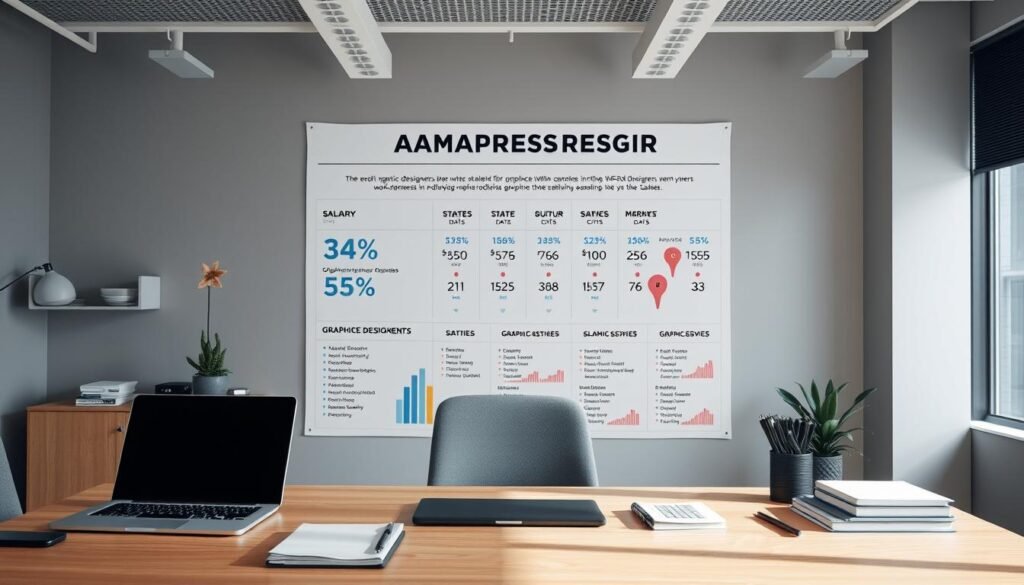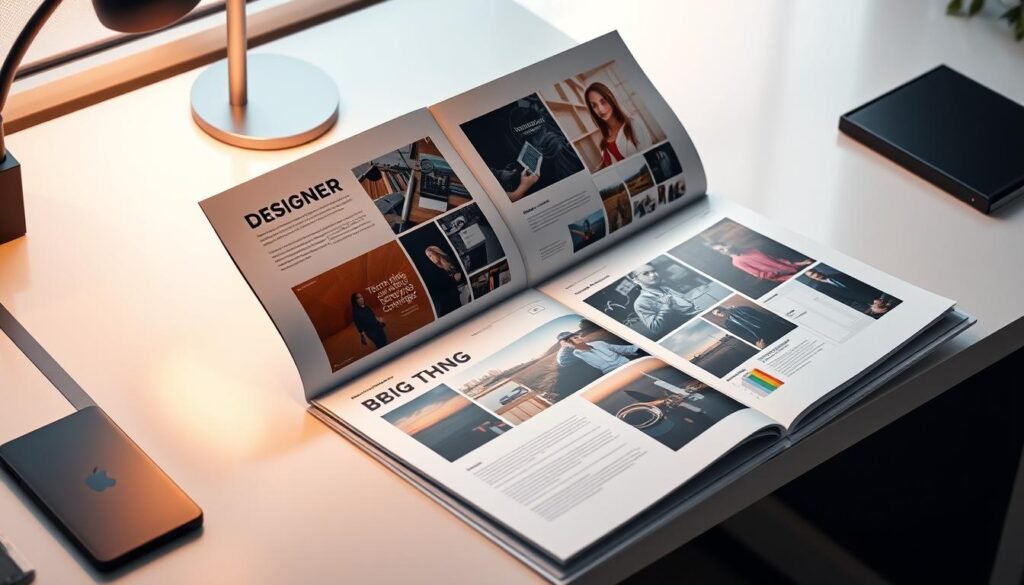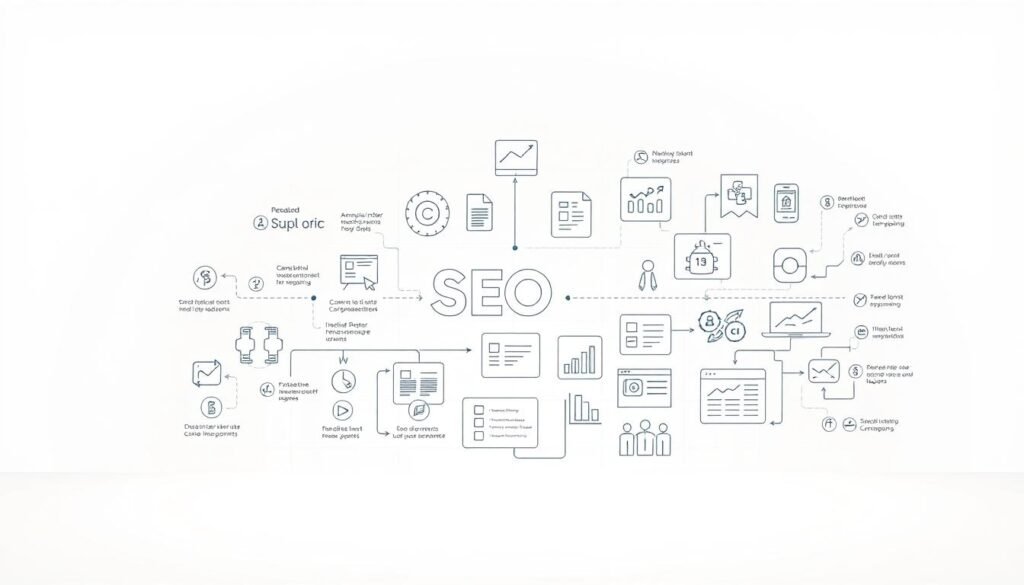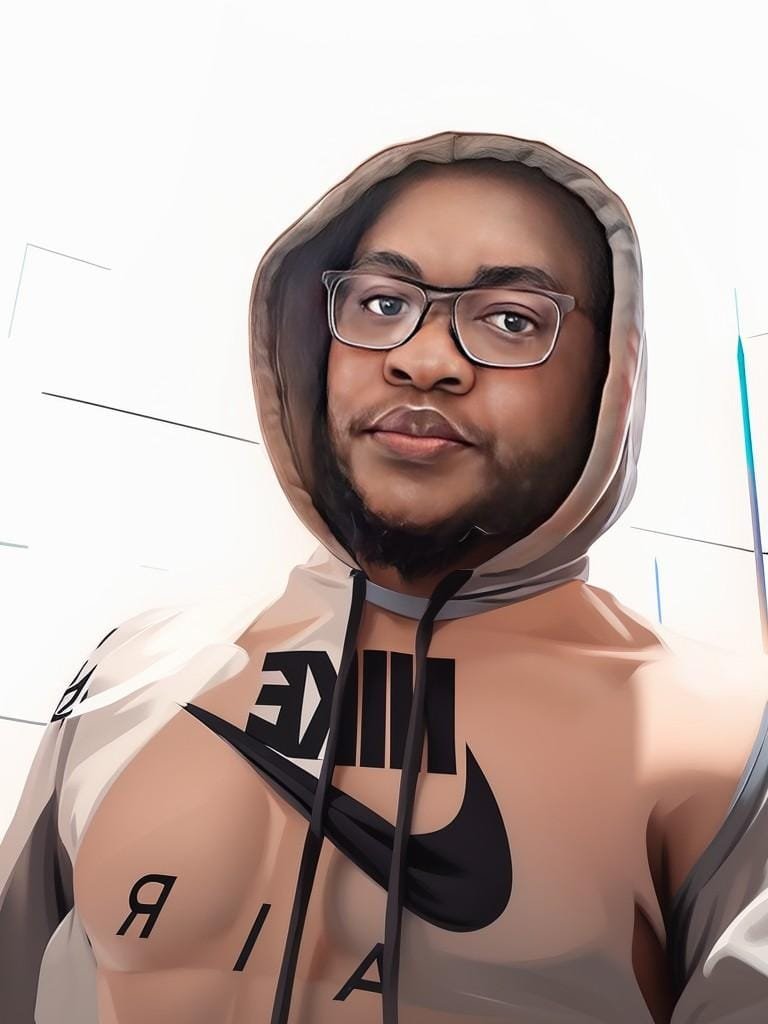yes, many graphic designers earn competitive pay, but income varies widely by role, location, and skills.
I write this as a practicing designer who studies industry data and hires creative talent. Graphic designers plan and produce visual content for brands, websites, packaging, and campaigns. I rely on BLS-based summaries that show a recent median annual wage near $61,300 (May 2024).
Pay shifts with experience and path. Entry roles build a portfolio. Senior roles, art direction, or crossover work with web and UX often push pay higher.
Location matters: markets like DC, New York, and California pay above the national median. Industry also matters—tech and advertising tend to offer higher rates than small businesses or print shops.
In this guide I map quick salary answers, experience ranges, and clear tactics to grow your pay and position in the field.
Table of Contents
ToggleKey Takeaways
- Median pay sits around $61,300, but ranges are wide by market and role.
- Experience and portfolio strength drive faster salary growth.
- Higher pay often requires leadership or cross-disciplinary skills (web, UX).
- Location and industry affect earnings more than title alone.
- Remote work and AI tools change workflows and opportunity paths.
My quick answer on graphic designer salary today
I’ll keep this short: the median salary for a graphic designer sits near $61,300 per year (May 2024 BLS data).
Entry-level roles commonly start around $40,000–$50,000, while mid-level offers often fall between $55,000 and $75,000.
Senior hires typically range $75,000–$95,000, and art or creative directors often hit $90,000–$130,000+. Web and digital roles command a higher median—about $95,380—showing clear premium for technical crossover.
- Median snapshot: low $60Ks per year, with wide variation by market and level.
- Early career: $40K–$50K is common; portfolio and measurable results speed income growth.
- Industry tilt: web and product teams pay more than print-heavy shops.
Education helps open doors, but recent experience and a strong portfolio often matter more in hiring for many jobs in this field.
“Use the median as a starting point—your location, experience level, and niche will shape your actual income.”
What graphic designers earn by experience level and role
When you map roles against experience, clear salary bands emerge that you can target in career planning.
Entry-level and junior designers: average starting pay per year
Entry-level (0–2 years): I typically see offers in the $40,000–$50,000 range per year when candidates show real projects from school or freelance work that solve clear goals.
Mid-level vs. senior designers: how much more designers earn after 3–6+ years
Mid-level (3–5 years): As a designer gains autonomy and broader impact, pay usually moves to $55,000–$75,000. This level rewards collaboration across a company’s products.
Senior (6+ years): Designers often reach $75,000–$95,000 when they lead projects, mentor teammates, and own outcomes tied to metrics like conversion or retention.
Art/creative directors: when design leadership pushes income higher
Moving into art or creative direction adds strategy and cross-functional leadership. That shift commonly pushes salary potential into the $90,000–$130,000+ bracket, with higher medians at larger companies.
- Each level up usually requires deeper portfolio work, documented process, and measured outcomes.
- A degree can open the first job, but consecutive years of targeted experience and results drive raises.
- I recommend tracking project KPIs and communication wins to prove business value during reviews.
“Track outcomes, not just visuals—business impact accelerates raises and promotions.”
Where you work matters: state, city, and remote pay in the United States
Location shapes the offers you’ll see. I check regional data to show how state and metro markets alter salary expectations.
Highest-paying states and metros right now
Some states pay a clear premium. The District of Columbia leads near $87,980 per year.
New York (~$81,370) and California (~$80,240) follow closely due to dense media and tech markets.
| State / Metro | Average pay (approx) | Industry drivers | Notes |
|---|---|---|---|
| District of Columbia | $87,980 | Agencies, federal contracts | Top-tier market rates |
| New York | $81,370 | Media, advertising, tech | High demand, high rent |
| California | $80,240 | Tech, startups, entertainment | Strong digital teams |
| Massachusetts / Washington | $73,000–$73,130 | Tech, education, agencies | Competitive regional hubs |
| Low-range examples | $41,350–$44,800 | Smaller local economies | South Dakota, West Virginia |
Cost of living, remote roles, and how location-adjusted salaries shake out
Net income matters more than headline pay. A $70K salary in a low-cost city can fund a better lifestyle than $85K in an expensive metro.
Remote work changes the equation. Many companies now let talent earn coastal-level pay while living outside expensive metros.
When negotiating, I recommend citing specific state ranges and showing business outcomes from your portfolio. This ties your ask to market data and company value.
Tip: Use cost-of-living calculators to compare offers and focus on net income, not just the gross salary.
Industry and niche: how web, digital, and UX compare to traditional graphic design
I review where pay rises when work connects to product outcomes. Industry choices shape career paths and salary ranges. Web, digital, and user experience roles reward product thinking and technical fluency more than many traditional media roles.
Specialized services, advertising/PR, and publishing
BLS data shows specialized design services pay above about $63,400. Advertising and PR sit around $59,700, while publishing averages near $44,690.
Web and digital vs. print-focused roles
Web developers and digital designers have a materially higher median at roughly $95,380. The top 10% can exceed $192,180, which signals a strong premium for product-aligned skills.
| Role / Industry | Median pay (approx) | Top-end | Notes |
|---|---|---|---|
| Specialized design services | $63,400 | $100k+ | Client work, studios |
| Advertising / PR | $59,700 | $120k | Campaign-driven |
| Publishing / media | $44,690 | $80k | Print and editorial |
| Web / digital / product | $95,380 | $192,180 | User-focused, technical |
Adjacent roles that shift income
Art directors earn a median near $111,040, with top earners past $211,410. Illustrators and digital artists often approach a high median too.
- Choosing websites and product work boosts your salary ceiling.
- Adding a degree or front-end certificate can unlock hybrid jobs.
- Focus your portfolio on user experience and measurable product results.
“Shift toward product and web work if you want higher-paid roles tied to KPIs.”
The biggest factors that drive a designer’s income
In hiring and raises I watch four clear drivers that separate higher-paid designers from the rest.
These factors steer offers and promotions: formal education, practical skills, a results-focused portfolio, and ongoing learning. Each one raises your value in different ways.
Education and credentials
Many roles still prefer a bachelor’s degree in graphic design or a related field. BLS data shows a bachelor is common among hires. NASAD-accredited programs can signal stronger training to employers.
That said, credentials only open doors. Employers often weigh a living portfolio and proven outcomes more heavily than paper alone.
Skills and software that lift pay
Hands-on skills matter. Mastery of Adobe Illustrator, InDesign, and Photoshop is baseline. Adding Figma, motion tools, and basic HTML/CSS raises your market value.
UI/UX abilities—like research, wireframing, and accessibility—translate to product impact. Companies pay for measurable results tied to user metrics.
| Factor | Primary influence | Examples |
|---|---|---|
| Education | Signals baseline knowledge | Bachelor’s, NASAD accreditation |
| Skills | Directly affects job performance | Adobe Suite, Figma, HTML/CSS |
| Portfolio | Shows outcomes and process | Case studies with metrics |
| Continuous learning | Keeps pay competitive | Certifications, side projects |
Tip: Track outcomes, not just visuals—your portfolio should link design choices to business results.
Ultimately, income follows the problems you solve. Align your education and skill-building to high-impact work and your career will reflect that.
How I’ve seen designers push past the average salary
I’ve watched specific career moves lift pay rapidly when designers align with product teams. Specializing in UI/UX, motion, or web and product work opens higher-rate roles. Freelance and in-house specialists often command better compensation because their value ties directly to outcomes.
Specialization that pays
UI/UX, motion graphics, and product design show the clearest premium. Web and digital medians near $95,380 reflect that shift. Companies pay more when a skillset reduces friction, improves conversion, or speeds development.
Portfolio power
A portfolio that tells a story beats pretty visuals. Frame each project with goals, constraints, process, and measurable outcomes. Hiring managers and clients respond to case studies that list conversion lifts, reduced bounce, or faster workflows.
Negotiation and strategic moves
Certifications (Adobe, UX certificates) and clear metrics boost negotiating power. Strategic moves—joining product teams or stepping into art direction—compound raises faster than small annual bumps.
| Action | Why it raises salary | Example result |
|---|---|---|
| Specialize in UI/UX or product | Links work to business metrics | Higher median pay, better offers |
| Build outcome-focused portfolio | Shows measurable client wins | Stronger interviews, faster hires |
| Pursue certifications | Validates technical skills | Improved negotiation leverage |
| Move into product or art direction | Expands ownership and impact | Compound salary growth over years |
Tip: Showcase two or three flagship projects that tie design work to clear business outcomes—those case studies raise your ceiling.
Freelance vs. in-house vs. agency: what’s the best path to higher income?
I’ve supported freelancers and in-house teams, so I’ve seen how pay shifts by path and pricing.
Freelance can unlock higher income if you price well. Typical rates run $50–$150 per hour, with top freelancers clearing $100,000+ annually. Successful independents mix hourly, project, and retainer models to steady cash flow.
Hourly rates, retainers, and project pricing
Blend models. Hourly covers short tasks. Project pricing rewards efficiency. Retainers stabilize monthly revenue and deepen client relationships.
Choosing clients, managing time, and building recurring work
Pick clients with ongoing needs—site updates, campaign cycles, or content refreshes. That supports recurring projects and predictable income.
- Protect creative blocks and limit admin with templates.
- Package discovery, strategy, and analytics to justify higher fees.
- Track utilization and profitability per client to avoid undercharging.
| Path | Typical salary / income range | Key advantage |
|---|---|---|
| Freelance | $50–$150/hour; top $100k+ | Higher upside, flexible pricing |
| In-house | $55,000–$85,000 | Stability, benefits, brand depth |
| Agency | $58,000–$95,000 | Fast skill growth, varied marketing projects |
“If your career goal is leadership, in-house product teams or larger agencies can offer clearer paths. For higher freelance income, focus on repeat clients and value-based pricing.”
What’s changing in 2025: trends reshaping designer pay
Hiring trends in 2025 widen access to higher-pay roles for people outside big metros. Remote and hybrid work now routes more jobs to talent across the U.S., letting many compete for top-market offers without relocation.
Remote and hybrid work
Remote roles mean more applicants can land jobs in high-paying cities while living in lower-cost areas. I see companies advertise roles that accept applicants from multiple states.
AI in the workflow
AI tools—like Adobe Firefly, Midjourney, and Canva’s Magic Design—speed mockups and ideation. That pushes the premium toward strategy, storytelling, and system thinking.
Print vs. digital growth
Traditional media and print show slower growth, while web and user-focused roles project stronger demand—about 8% growth for web and digital work over coming years.
“Lean into product skills, accessibility, and analytics; those areas will outpace general print work in compensation.”
- Priority skills: accessibility, design systems, analytics literacy, cross-functional communication.
- Integrate AI as an accelerator but keep human judgment central to deliver higher value.
- I block time for new software features and prototyping methods to stay competitive.
do graphic designers make good money
Real earnings rise when visual work ties directly to user metrics or revenue.
Median pay for graphic designers sits near $61,300 per year (May 2024). Entry roles often start around $40,000–$50,000, while senior positions commonly reach $75,000–$95,000.
The gap widens when you specialize. Web and digital roles show a higher median—about $95,380. Freelancers who charge $50–$150 per hour and land steady client work can exceed $100,000 annually.
- Short answer: yes—specialize in product, web, or leadership to raise base salary and growth potential.
- Portfolio focus: show outcomes, not only visuals, to prove how your work moves metrics.
- Freelance path: package strategy and retainers to stabilize income and command premium rates.
- Career choice: art or creative direction and product design reward ownership with higher pay.
“Position your work around measurable impact and long-term client value—those moves lift income more than aesthetics alone.”
Conclusion
To conclude, the clearest path to higher salaries is tying your work to measurable results. The median pay sits near $61,300 per year, with entry roles around $40K–$50K, mid at $55K–$75K, and senior jobs near $75K–$95K. Art and creative directors commonly reach $90K–$130K+.
Web and digital roles show a clear premium (median about $95,380), and top freelancers charging $50–$150/hour can exceed $100K annually. High-paying states include DC, New York, and California.
My practical advice: focus on product skills, sharpen your portfolio with outcome examples, track project metrics, and keep learning software and user experience methods. That combination shifts your career and the factors that raise salaries.
Be intentional with projects and clients; document results, then negotiate from evidence. When your designs solve business problems, companies follow with higher pay.














